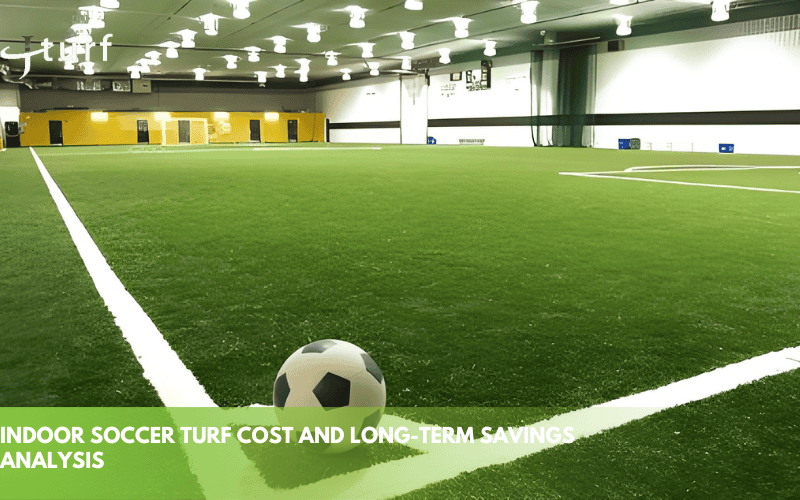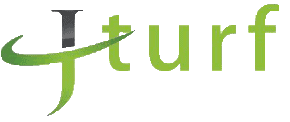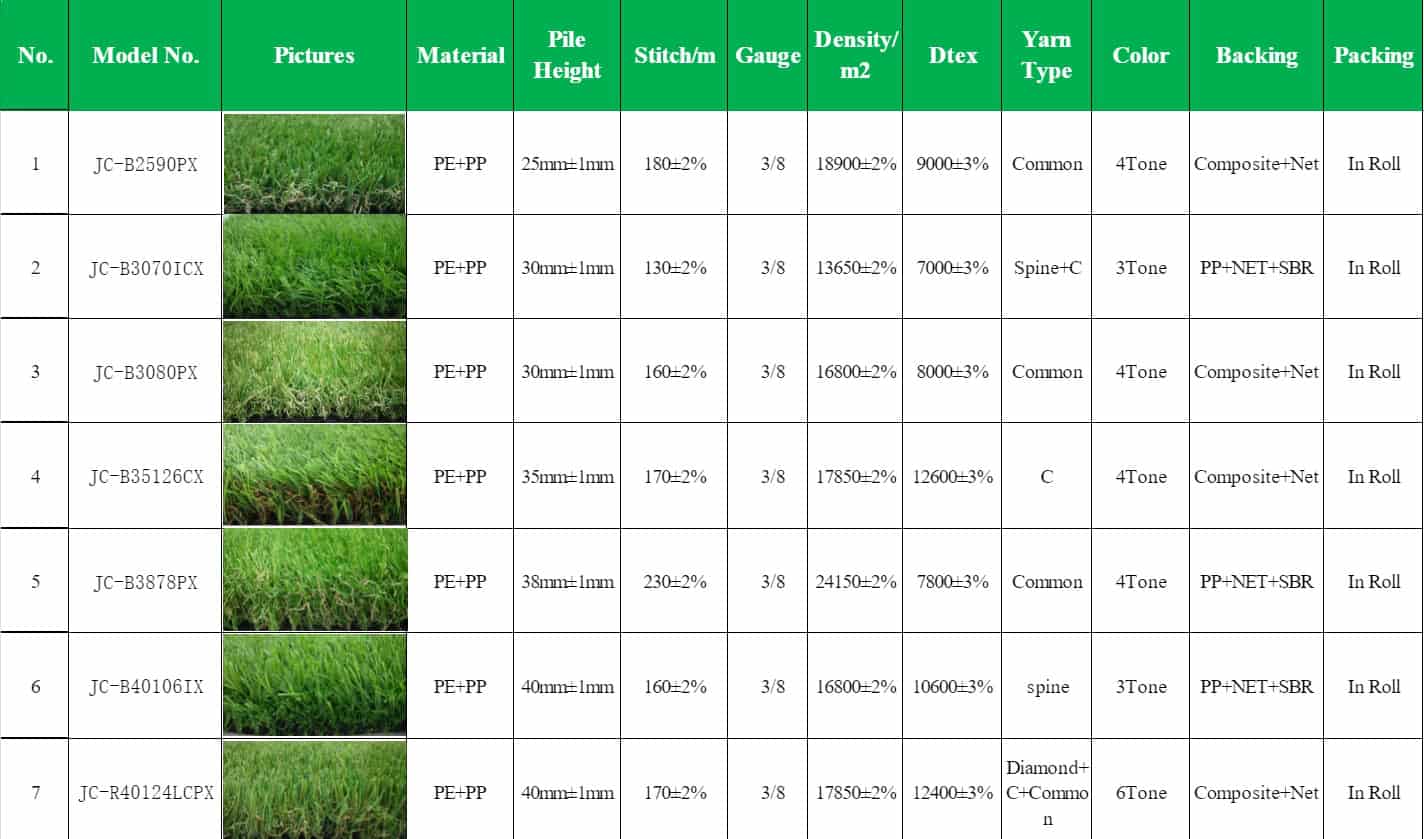If you’re considering artificial turf for your indoor soccer field, you may be wondering: Why is indoor soccer field turf the best choice? This article will explore the key benefits of indoor soccer field turf, answering all your questions, from performance to long-term cost savings.
We’ll cover important topics such as how to choose the right turf, cost considerations, and why indoor turf is better than outdoor turf. We’ll also debunk some common myths to help you understand why artificial turf is the ideal solution for indoor soccer.
What Is Indoor Soccer Turf?
Indoor soccer turf refers to a specific variety of artificial grass tailored for use in indoor sports venues. It mimics the feel of natural grass while offering durability and low maintenance, able to withstand the demands of indoor soccer games and practices.
The main purpose of indoor soccer turf is to provide athletes with a high-quality playing surface, similar to outdoor soccer fields, but optimized for indoor conditions. It is engineered to withstand heavy usage while maintaining both its functionality and aesthetic appeal.
Why Should You Choose Artificial Turf for Indoor Soccer?
Artificial turf offers several advantages for indoor soccer fields, making it an ideal choice for both facility managers and players:
1. Durability and Longevity
Artificial turf is designed to withstand heavy use and foot traffic, maintaining its performance and appearance over time. Unlike natural grass, it requires minimal upkeep, ensuring long-lasting durability.
2. Low Maintenance Requirements
With no need for mowing, watering, or fertilizing, artificial turf only requires occasional cleaning. This reduces maintenance costs and saves time, especially in indoor environments where weather and grass growth are not issues.
3. Safety Features
Providing a consistent and cushioned surface, artificial turf reduces the risk of slips and falls. Its shock-absorbing qualities also protect players’ joints, enhancing safety during high-intensity indoor soccer games.
4. Consistent Performance
Artificial turf ensures a uniform surface, offering predictable ball bounce and roll, which improves ball control and consistency, crucial for indoor soccer play.
5. Cost-Effectiveness and Year-Round Play
Though installation costs may be higher, artificial turf saves on maintenance and water bills in the long term. It can also be used in all weather conditions, providing a consistent playing surface year-round.
6. Additional Benefits
Flexibility for Various Sports: Artificial turf is adaptable for different sports, making it suitable for multi-sport indoor facilities.
Eco-Conscious: By eliminating the need for pesticides and fertilizers, synthetic turf reduces environmental impact.
Aesthetic Appeal: Designed to closely mimic real grass, artificial turf enhances the visual appeal of the facility.
How to Choose the Right Indoor Soccer Turf?
Selecting the appropriate indoor soccer turf entails assessing multiple crucial factors to guarantee superior performance, safety, and longevity. Here’s a concise guide:
Material Quality:
- Look for high-quality synthetic fibers like polyethylene or nylon. Polyethylene is softer and more player-friendly, while nylon is durable but less forgiving.
- Check the backing material—polyurethane is more durable than latex and resists wear from heavy use.
Pile Height:
- Opt for shorter pile heights (20-30mm) for indoor soccer. Shorter turf allows faster ball roll and better control, mimicking a hard court surface.
- Avoid long-pile turf (40mm+), as it slows gameplay and increases injury risk.
Infill Type:
- Common infills include rubber crumbs, sand, or a mix. Rubber provides cushioning but can heat up; sand adds stability but may feel harder.
- Choose non-toxic, eco-friendly infill for safety, especially in enclosed spaces with limited ventilation.
Traction and Shock Absorption:
- Ensure the turf offers good grip to prevent slipping, but avoid overly aggressive textures that cause friction burns.
- Check for adequate shock absorption (via infill or underlay padding) to reduce joint strain and injury risk.
Durability and Warranty:
- Select turf rated for high traffic (measured in cycles of wear). Look for UV-resistant fibers to prevent fading if exposed to artificial lighting.
- Verify warranty length—8-10 years is standard for quality turf.
Maintenance Needs:
- Choose turf with low maintenance requirements, like those with built-in drainage for spills or easy-to-clean surfaces.
- Confirm the need for periodic brushing or infill replenishment to maintain performance.
Facility Specifications:
- Measure your indoor space to ensure the turf fits. Customizable rolls or tiles are ideal for non-standard dimensions.
- Confirm the subfloor type (concrete, wood, etc.) and choose compatible turf with appropriate underlay.
Additional Considerations:
- Face Weight: A higher face weight (fiber per square meter) means denser, more durable turf for better performance and longevity.
- Aesthetic Appeal: Consider the color and appearance of the turf to ensure it complements the facility’s overall look.
- Sport-Specific Needs: Different sports may require specific turf characteristics. For example, turf designed for soccer may not be suitable for other sports like sled work.
- Installation Costs: When comparing turf options, factor in installation costs, as some turf may require more complex installation or custom cuts.
Indoor Soccer Turf Installation
Installing indoor soccer turf involves careful preparation and precise installation to create a high-quality, durable playing surface. Here’s a step-by-step guide:
1. Planning and Preparation
Space Measurements: Measure the area to determine turf size.
Turf Selection: Choose turf with appropriate durability and pile height for soccer.
Budget: Factor in turf cost, installation, and maintenance.
2. Prepare the Subfloor
Clear the Area: Remove existing flooring and debris.
Level the Surface: Ensure the subfloor is smooth and dry.
Install Base Layer (Optional): Add padding or rubber flooring for shock absorption if needed.
3. Unroll and Lay Out the Turf
Allow Turf to Relax: Let the turf rest for 1 hour to shape properly.
Measure and Cut: Trim turf to size, leaving room for seams.
4. Adhere the Turf to the Subfloor
Apply Adhesive: Spread adhesive evenly on the subfloor and let it air-dry for 15-30 minutes.
Lay the Turf: Place turf over adhesive, ensuring it fits well and the seams align.
Seal the Seams: Use seam tape or adhesive to secure edges.
5. Secure the Turf
Use a Weighted Roller: Roll a weighted roller over the surface to ensure adhesion.
Allow Adhesive to Bond: Let the turf set for 24 hours without disturbance.
6. Add Turf Fill (Optional)
Distribute Infill: Apply and spread infill evenly across the turf.
Brush the Turf: Use a power broom to keep the fibers upright and distribute the infill.
7. Final Touches
Trim Edges: Neatly trim the edges and add transition strips where necessary.
Clean the Surface: Sweep or vacuum the turf for a clean finish.
8. Ongoing Maintenance
Regular Cleaning: Clean the turf periodically to remove dirt and debris.
Check for Wear: Inspect the turf for damage and replace sections as needed.
Repairs: Fix any loose seams or turf damage promptly.
Indoor Soccer Turf Cost Considerations
The cost of installing an indoor soccer turf field varies significantly based on factors like field size, turf quality, infill material, and installation complexity. On average, installing an indoor soccer turf field ranges from $80,000 to $440,000. Below is a breakdown of the key factors that influence these costs.
Key Cost Factors
Field Size and Dimensions: Larger fields, like a regulation-size indoor soccer field, incur higher costs due to more turf, infill, and labor. A smaller training area will be less expensive. Larger fields also require more maintenance, raising long-term costs.
Turf Quality and Type: High-quality turf with denser fibers, durable backing, and enhanced cushioning generally costs more but offers better performance and safety. Selecting turf based on pile height and fiber type will influence both upfront costs and long-term durability.
Infill Material: Infill material affects the cushioning, traction, and feel of the turf. Indoor fields often use low-dust, low-odor options like EPDM or TPE. Rubber-based infill is more affordable, while organic materials like cork tend to be pricier.
Shock Pads and Cushioning: Shock pads enhance safety and comfort, reducing the need for excessive infill. While shock pads increase upfront costs, they extend the turf’s lifespan and improve player safety.
Additional Costs
Subsurface Preparation: Indoor fields do not require drainage systems but still need surface preparation, such as leveling or adding a base layer, which can add to the cost.
Lighting: Lighting systems are essential for indoor soccer fields. The cost is less than outdoor fields, but it must be on throughout the day unless there are windows or skylights.
Maintenance Equipment: Specialized grooming and cleaning equipment are necessary for upkeep. While they represent an upfront cost, they help extend the turf’s lifespan and reduce long-term maintenance expenses.
Accessories: Additional features like line markings, protective padding, and netting increase the initial cost but improve the field’s versatility and safety.
Cost-Saving Tips
- Choose Mid-Range Turf: Opt for turf that balances cost and performance to meet the facility’s needs.
- Phased Installation: Start with a smaller field or fewer features to spread out costs over time.
- Invest in Shock Pads: Shock pads may add initial costs but reduce long-term maintenance and extend the field’s lifespan.
- Seek Grants and Funding: Many public and private programs provide financial support for sports facility projects, helping reduce installation costs.

Best Indoor Soccer Turf
Our indoor soccer turf offers a superior blend of high – level performance, robust safety features, and exceptional durability, rendering it the perfect option for professional sports venues, athletes, and those responsible for facility management. Here’s why it stands out:
Optimized Performance for Indoor Soccer
- Pile Height and Surface Design: With a pile height of 20-30mm, our turf ensures fast ball roll and precise control, replicating the feel of professional indoor courts. Constructed from 100% polyethylene (PE) fibers, it delivers a seamless and uniform surface that significantly improves playability.
- Traction and Ball Interaction: The surface is designed for optimal traction, allowing players to execute quick movements and sharp turns without slipping. The textured fibers provide excellent ball grip, improving passing and shooting accuracy.
Unmatched Safety Features
- Shock Absorption: Equipped with a 5mm foam-backed underlay, our turf offers superior cushioning that reduces joint strain and minimizes injury risks such as ankle twists or ACL injuries. This level of protection aligns with FIFA Quality Pro standards for futsal.
- Non-Toxic and Fire-Safe: Our turf uses eco-friendly, non-toxic infill options and meets stringent fire safety standards, ensuring a safe environment for indoor play.
Exceptional Durability
- Premium Materials: Made from high-quality polyethylene and nylon yarns, our turf is engineered to withstand heavy foot traffic in indoor soccer facilities. It offers a long lifespan of 12-15 years, even with intense use.
- Low Maintenance: For ease of upkeep, our turf offers infill-free options that reduce maintenance costs and downtime. For turf systems with infill, the robust backing resists degradation, ensuring long-term performance.
Compliance with Professional Standards
- FIFA Certification: Our turf meets FIFA Quality Pro standards, ensuring consistent ball performance and stable player footing, which are essential for competitive indoor play.
- Versatility: Compatible with various subfloors like concrete or wood, our turf can be customized with inlaid lines or logos, making it perfect for multi-sport facilities or professional arenas.
Player-Centric Design
- Comfort and Feel: The combination of polypropylene and nylon provides a natural, grass-like feel while maintaining resilience. The cushioned midsole helps reduce fatigue, making the turf more comfortable for extended play.
- Professional Feedback: Our turf is highly praised by players for its grip, stability, and responsiveness, creating the ideal surface for high-performance indoor soccer.
Cost-Effectiveness and Customization
- Affordable Excellence: Despite its premium features, our turf is competitively priced, offering a balance of high performance and affordability.
- Tailored Solutions: Available in various pile heights, face weights, and colors, our turf can be customized to meet the unique needs of any facility, from community centers to professional sports arenas.
Indoor Soccer Turf vs Outdoor Soccer Turf
Indoor soccer turf differs from outdoor soccer turf in several key areas:
| Feature | Indoor Soccer Turf | Outdoor Soccer Turf |
| Construction | Denser, tougher, higher face weight, greater shock absorption. | More affordable, lower face weight, mimics natural fields. |
| Purpose | Designed for indoor use, gyms, and training facilities with high-impact use. | Designed for outdoor sports fields and landscape settings. |
| Features | No drainage holes, may include padding for shock absorption. | Includes drainage holes or permeable backing for water runoff. |
| Maintenance | Requires regular raking to maintain fiber alignment, protection from elements. | Less maintenance than grass, occasional grooming and infill adjustments. |
| Aesthetics | Less natural feel, focused on durability and functionality. | Designed to look and feel more like natural grass. |
| Examples | Arena Soccer Turf, Elite Soccer Turf. | Landscape and Sports Field Turfs. |
Common Myths About Indoor Soccer Turf
There are common misconceptions about indoor soccer turf. Let’s set the record straight on these myths:
Myth: Artificial Turf Is Uncomfortable
Debunked: Modern artificial turf is designed for player comfort. Shock-absorbing layers and polyethylene fibers provide a soft, grass-like feel while reducing joint strain. Technological advancements ensure that today’s turf is just as comfortable, if not more, than natural grass, especially with integrated cushioning systems that protect players during high-impact moves.
Myth: Artificial Turf Requires Too Much Maintenance
Debunked: Synthetic turf demands substantially less maintenance compared to natural grass. In contrast to grass, which necessitates frequent mowing, watering, and fertilizing, artificial turf merely requires routine cleaning and occasional brushing. This makes turf a low-maintenance, cost-effective option for indoor soccer fields, saving time and money over the long term.
Partner with a Trusted Soccer Turf Manufacturer
Choosing the right turf is just the beginning of building a high-performance indoor soccer facility.
Partnering with a trusted turf manufacturer ensures you get consistent quality, professional guidance, and maximum long-term value for your investment.
At JCturf, we specialize in manufacturing premium soccer turf designed for sports venues, training centers, and multi-sport facilities.
Our turf is engineered to deliver smooth ball control, strong traction, superior player safety, and exceptional durability under heavy use.
All of our products meet strict international standards, including FIFA Quality Certification, ensuring reliable performance and player protection in professional environments.
Whether you’re building a new indoor soccer arena or upgrading an existing facility, JCturf offers:
- Tailored turf solutions to fit your space and usage needs
- Expert advice from selection to installation support
- Consistent quality backed by tested manufacturing processes
Ready to create a world-class indoor soccer environment?
Explore our soccer turf options or contact JCturf today for a personalized consultation.
Build smarter. Play safer. Grow stronger — with JCturf.



